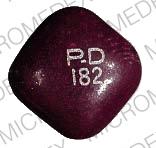Pyridium Plus Interactions
There are 713 drugs known to interact with Pyridium Plus (butabarbital / hyoscyamine / phenazopyridine), along with 33 disease interactions, and 2 alcohol/food interactions. Of the total drug interactions, 50 are major, 632 are moderate, and 31 are minor.
- View all 713 medications that may interact with Pyridium Plus
- View Pyridium Plus alcohol/food interactions (2)
- View Pyridium Plus disease interactions (33)
Most frequently checked interactions
View interaction reports for Pyridium Plus (butabarbital / hyoscyamine / phenazopyridine) and the medicines listed below.
- albuterol
- aloe vera
- aspirin
- Atarax (hydroxyzine)
- atorvastatin
- Bactrim DS (sulfamethoxazole / trimethoprim)
- Benadryl (diphenhydramine)
- betaine
- chromium picolinate
- Cipro (ciprofloxacin)
- ciprofloxacin
- clonazepam
- Cymbalta (duloxetine)
- Darpaz (hyoscyamine / methenamine / methylene blue / phenyl salicylate / sodium biphosphate)
- Diflucan (fluconazole)
- Digipepsin (pancreatin)
- Ditropan XL (oxybutynin)
- Elmiron (pentosan polysulfate sodium)
- Fish Oil (omega-3 polyunsaturated fatty acids)
- Flonase (fluticasone nasal)
- gabapentin
- Ginger Root (ginger)
- hydrochlorothiazide
- Levsin (hyoscyamine)
- lorazepam
- prednisone
- promethazine
- Prozac (fluoxetine)
- tramadol
- Vitamin D3 (cholecalciferol)
Pyridium Plus alcohol/food interactions
There are 2 alcohol/food interactions with Pyridium Plus (butabarbital / hyoscyamine / phenazopyridine).
Pyridium Plus disease interactions
There are 33 disease interactions with Pyridium Plus (butabarbital / hyoscyamine / phenazopyridine) which include:
- autonomic neuropathy
- GI obstruction
- glaucoma
- obstructive uropathy
- reactive airway diseases
- myasthenia gravis
- infectious diarrhea
- acute alcohol intoxication
- drug dependence
- liver disease
- porphyria
- rash
- respiratory depression
- G-6-PD deficiency
- hepatitis
- renal dysfunction
- cardiac disease
- tachycardia
- coronary artery disease
- gastric ulcer
- gastroesophageal reflux
- ulcerative colitis
- liver disease
- renal failure
- adrenal insufficiency
- depression
- hematologic toxicity
- osteomalacia
- paradoxical reactions
- hypertension
- hyperthyroidism
- diarrhea
- fever
Drug Interaction Classification
| Highly clinically significant. Avoid combinations; the risk of the interaction outweighs the benefit. | |
| Moderately clinically significant. Usually avoid combinations; use it only under special circumstances. | |
| Minimally clinically significant. Minimize risk; assess risk and consider an alternative drug, take steps to circumvent the interaction risk and/or institute a monitoring plan. | |
| No interaction information available. |
See also:
Further information
Always consult your healthcare provider to ensure the information displayed on this page applies to your personal circumstances.


